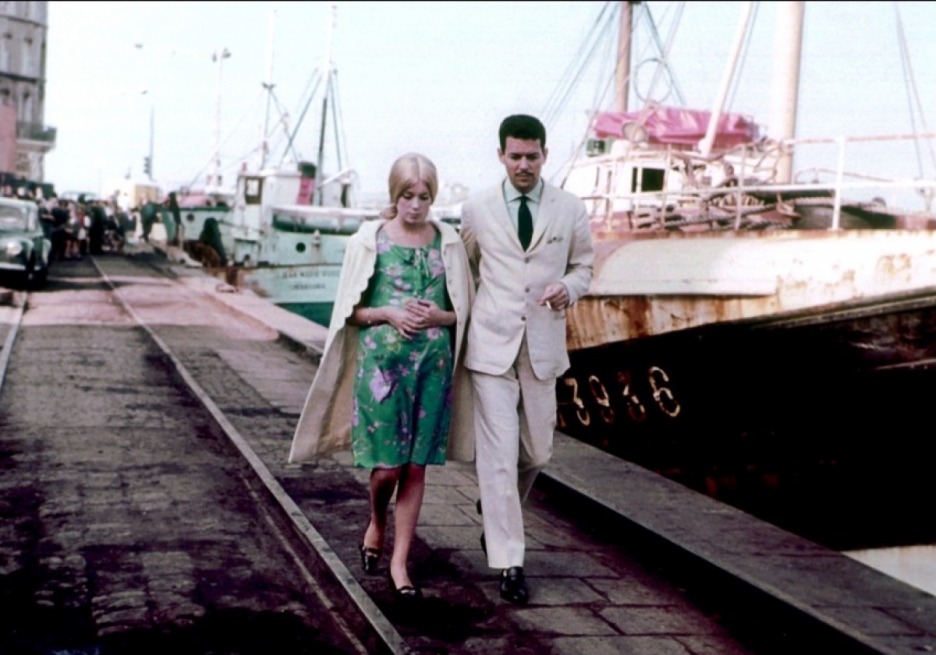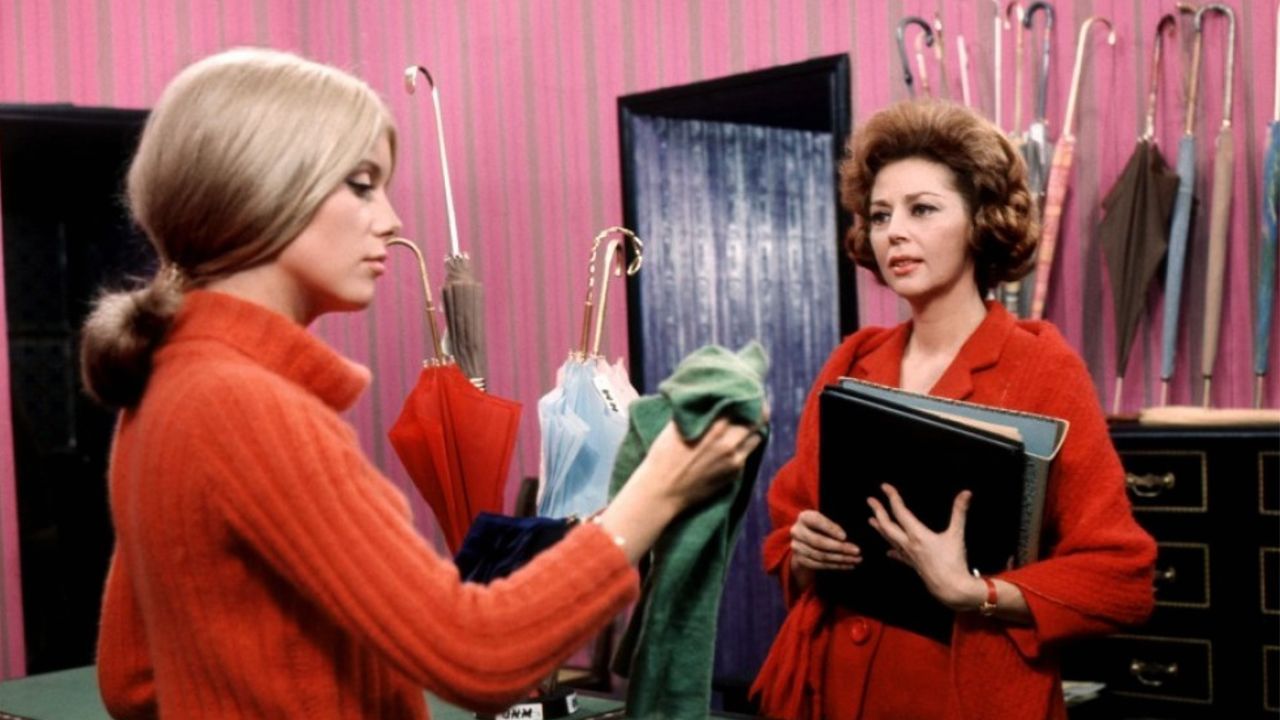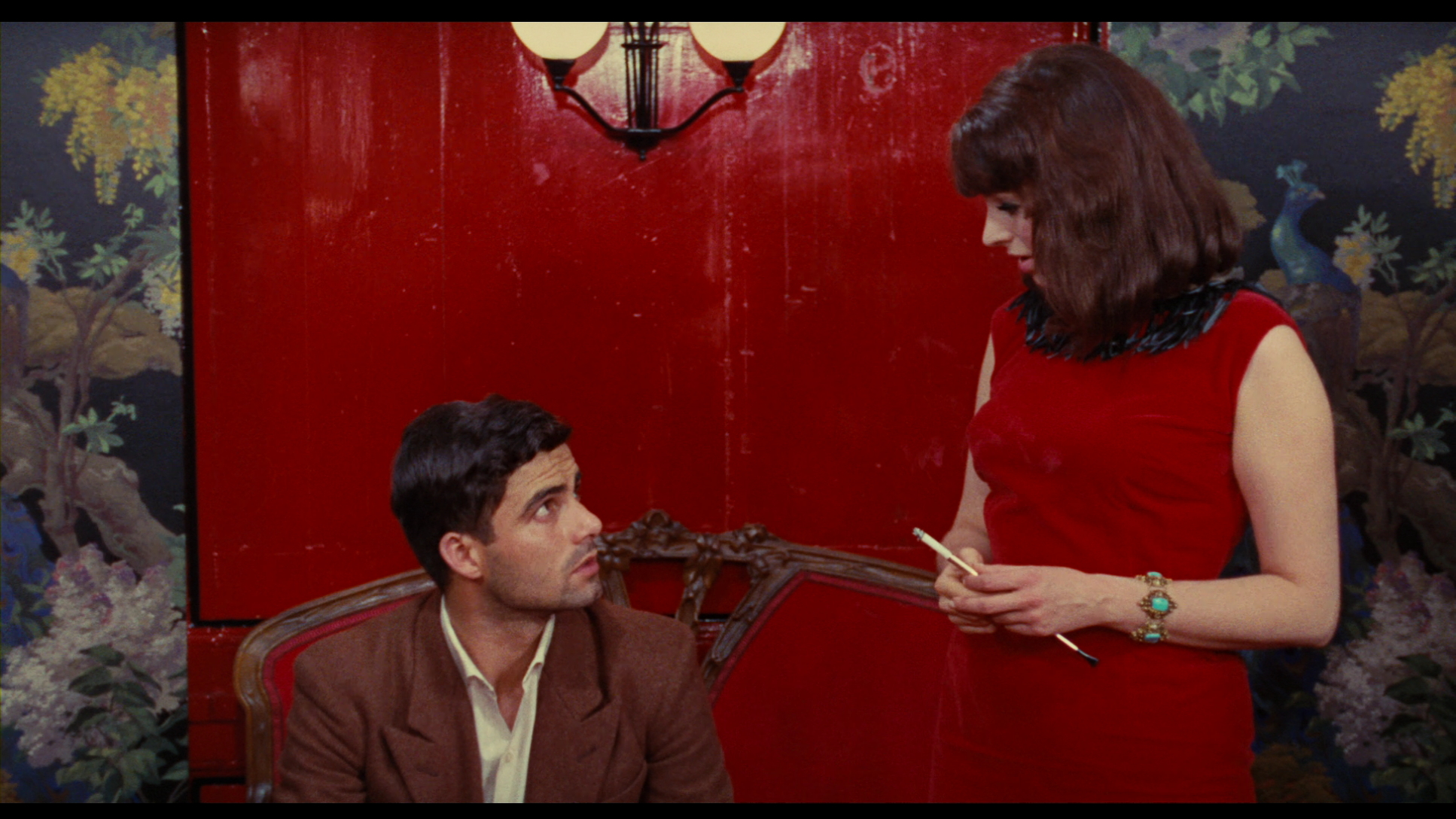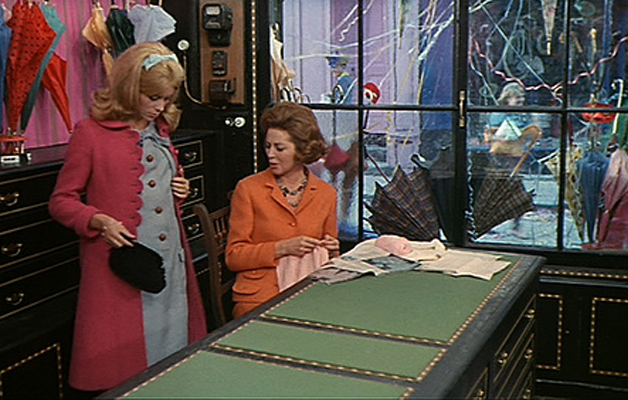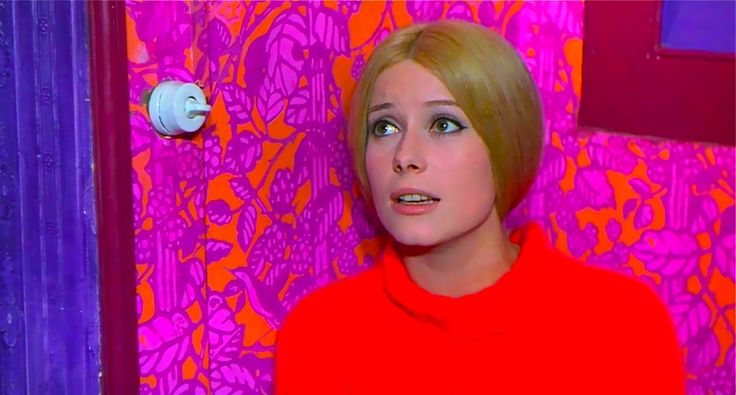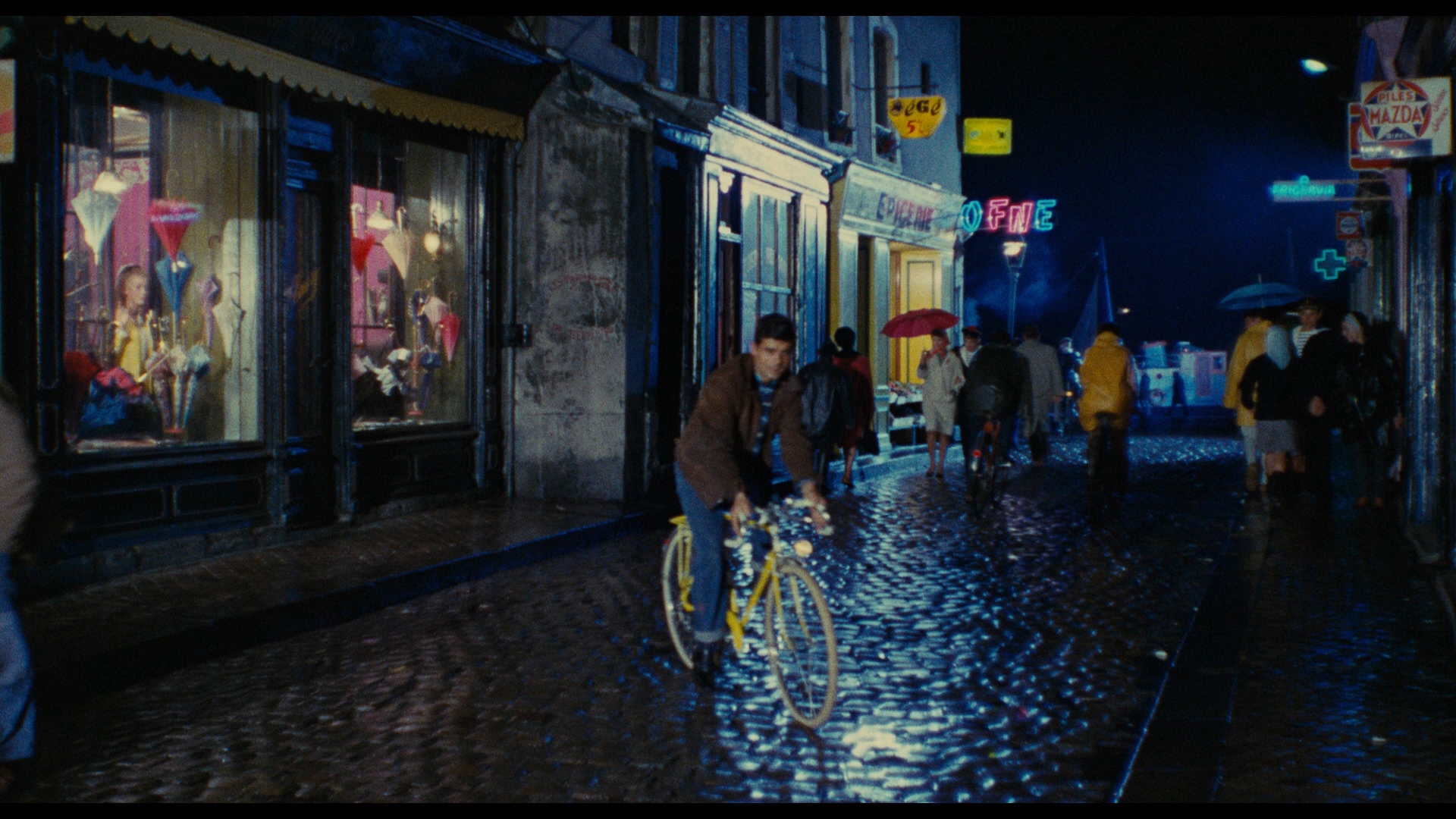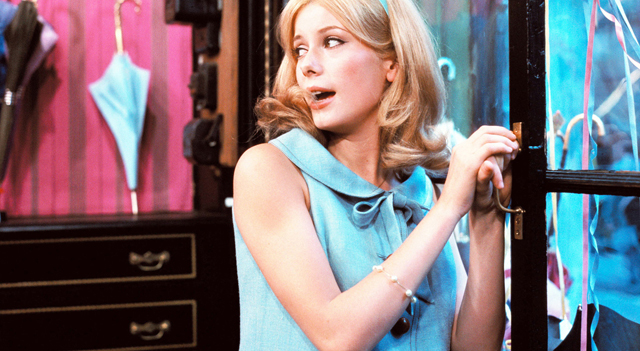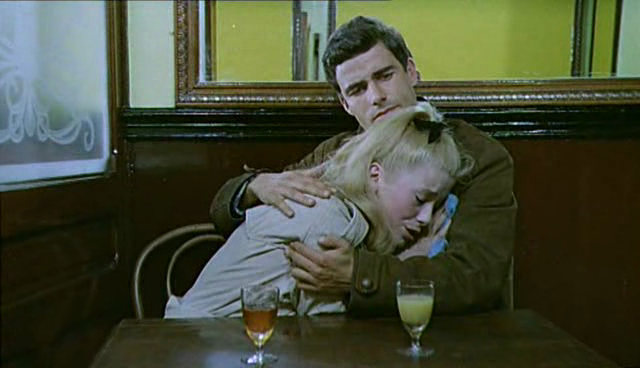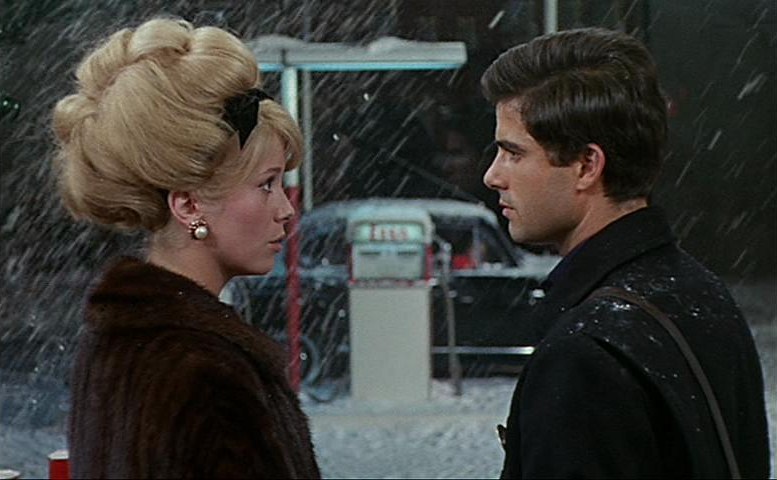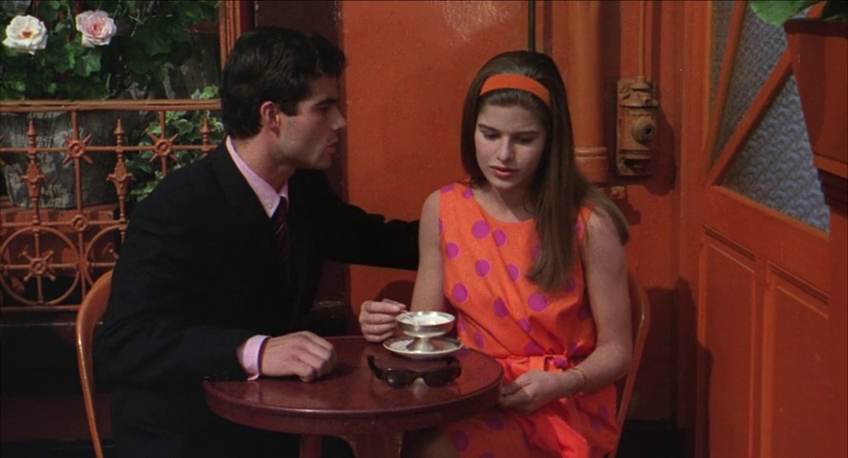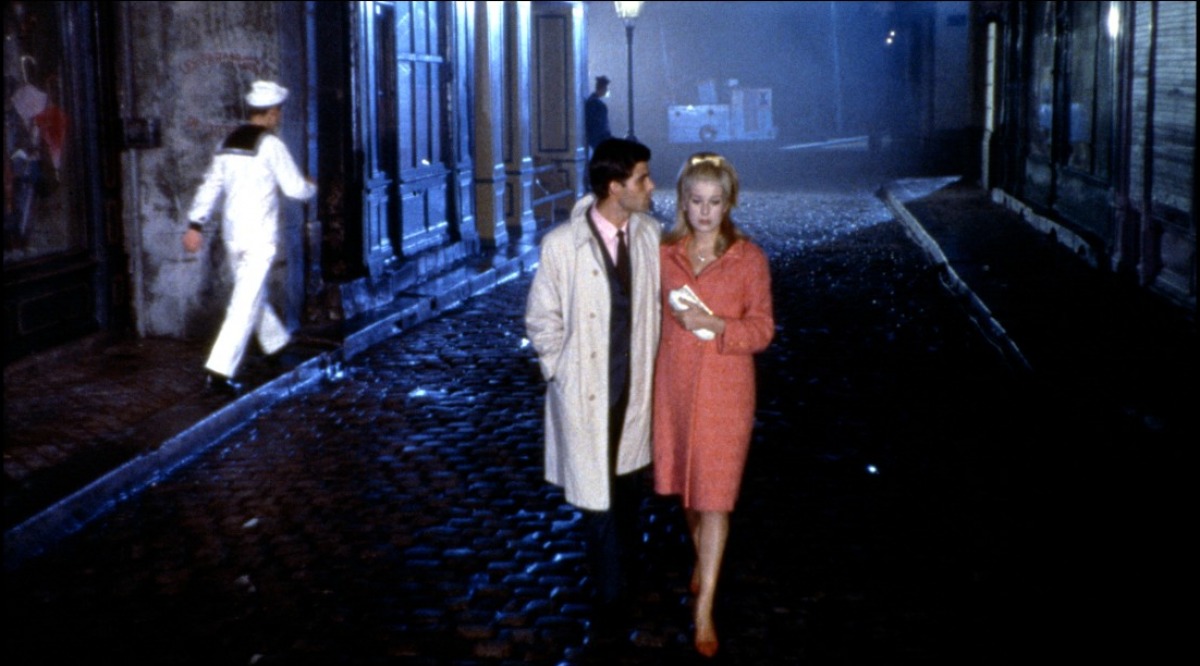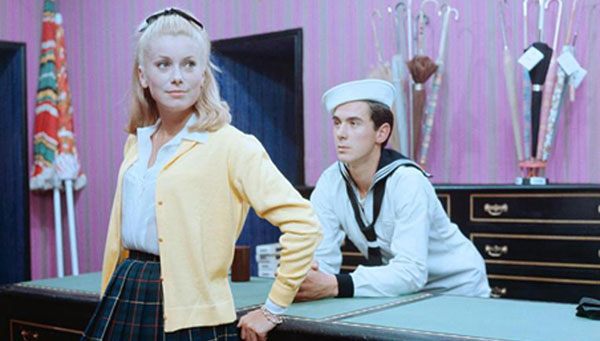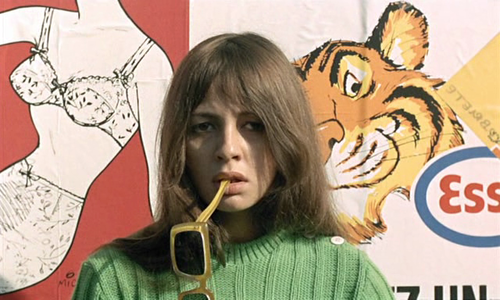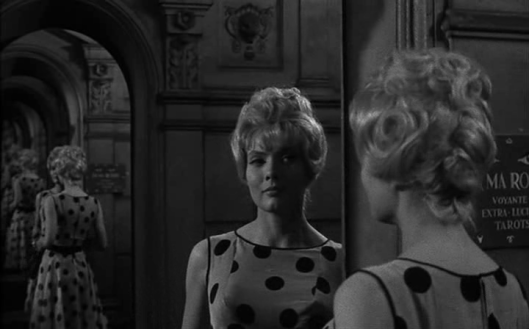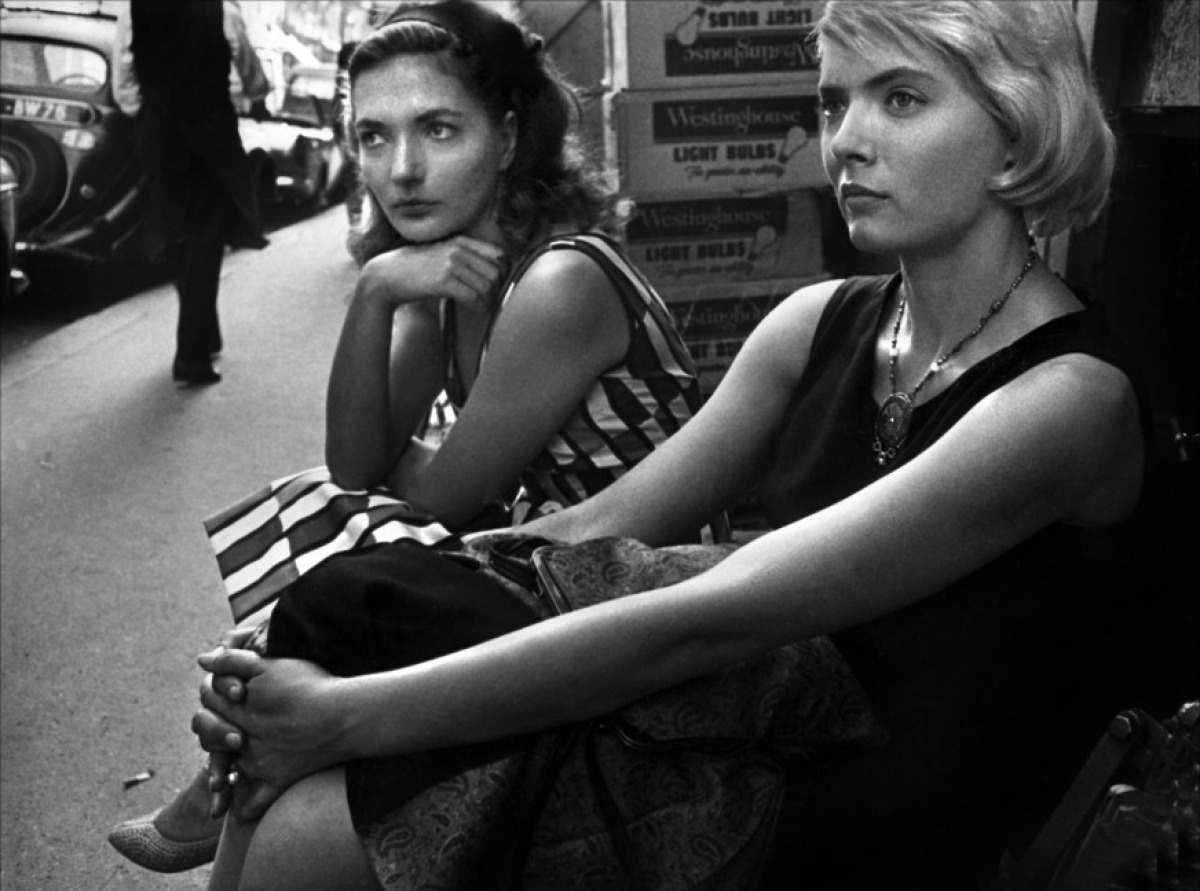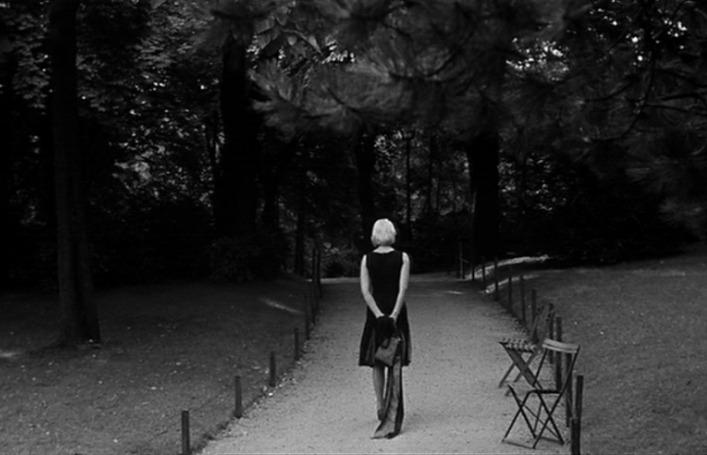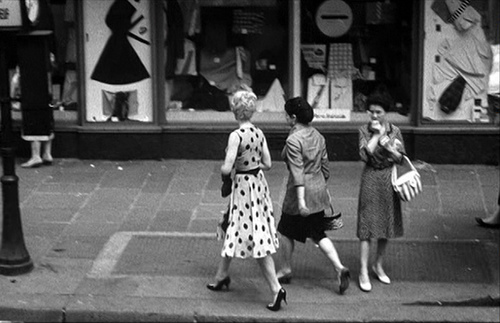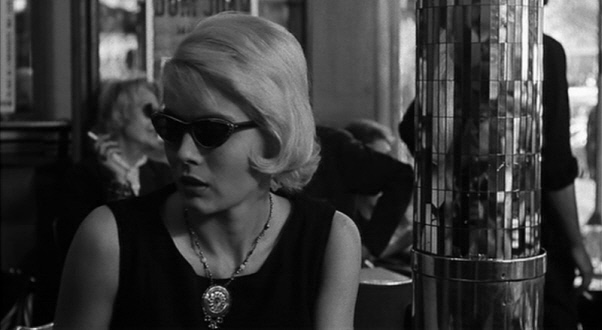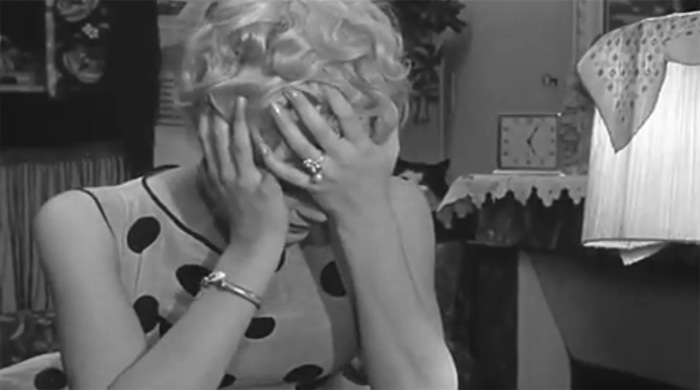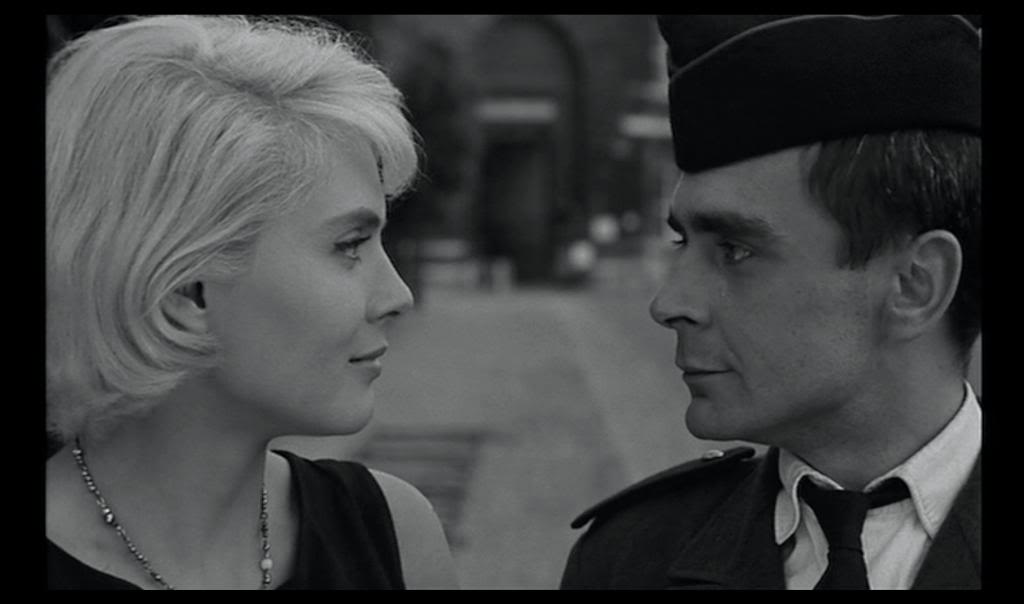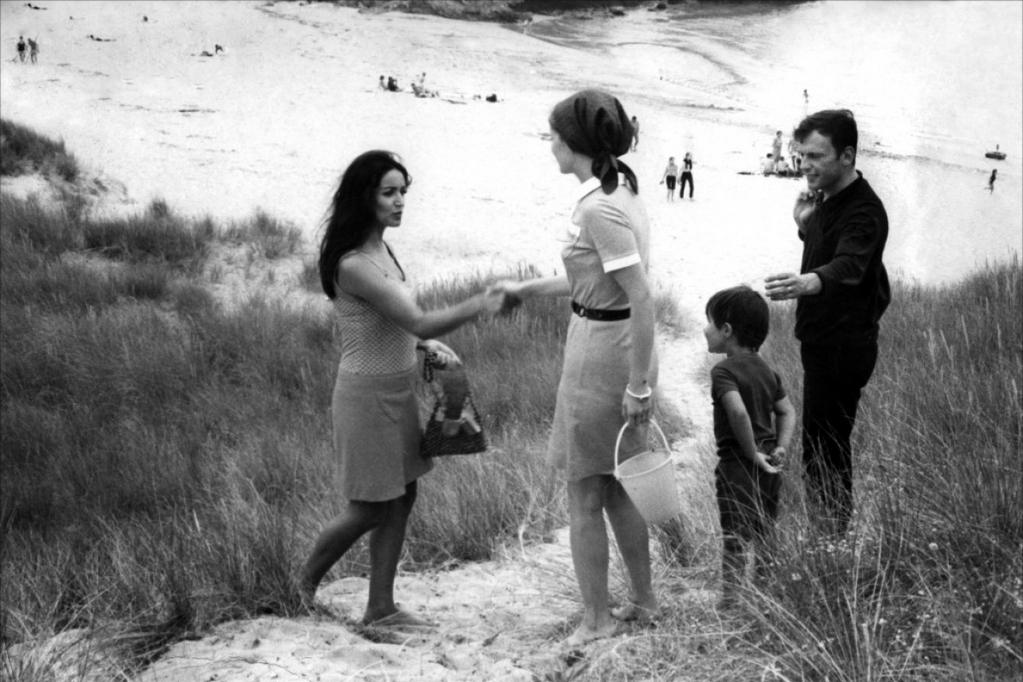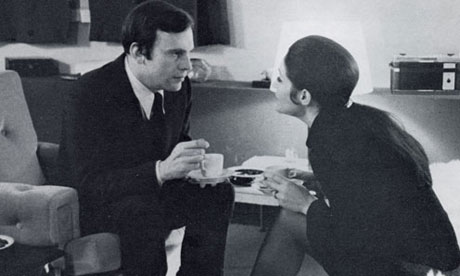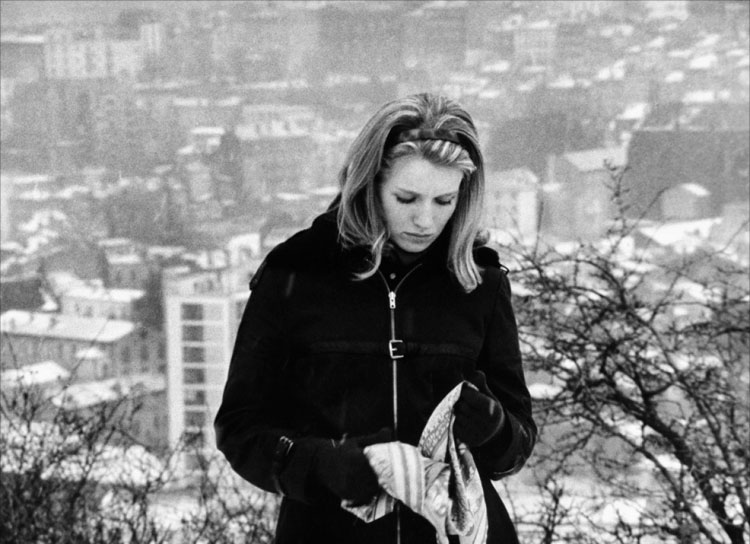
Fashion and Social Critiques Unfolded: Exploring the Layers of The Umbrellas of Cherbourg
In Jacques Demy's The Umbrellas of Cherbourg, a treasure trove of timeless fashion ideas awaits. This cinematic gem delves into the realms of young love, personal and societal transformation, social class dynamics, and the profound impact of loss amid the backdrop of the Algerian War.
Ann Vernon as Madame Emery and Catherine Denueve as Genevieve Emery
Film Overview
Initially released in 1964, The Umbrellas of Cherbourg, originally titled Les Parapluies de Cherbourg, stands as a seminal masterpiece of the French New Wave, artfully weaving a narrative of young love, societal change, social class dynamics, and the profound impact of loss against the backdrop of the Algerian War. Despite my initial skepticism towards its musical format, a genre I typically loathe due for a myriad of reasons, I approached the film with an open mind and found myself captivated by the breathtaking yet melancholic opening credit sequence that flawlessly set the tone for the entire feature.
Set in the enchanting coastal city of Cherbourg, France, the film traces the whirlwind love story of Genevieve (Catherine Deneuve), a 17-year-old working in her bourgeois mother's umbrella boutique, and Guy (Nino Castelnuovo), a 20-year-old auto mechanic employed at a nearby garage. The lovers vow eternal commitment to each other, but their lives and relationship undergo a profound transformation as the responsibilities of colonialism cast their shadow.
The film's remarkable cinematography, exquisite color palette, engaging writing, and superb acting and lip-syncing performances elevate it beyond the realm of ordinary melodrama, and captivated me until its poignant conclusion. Furthermore, writer & director Jacque Demy's skill in interweaving critiques of the Algerian War, the destructive effects of colonialism on the colonizer, the complexities of social class, and the realities of modern society, become apparent upon repeated viewings, adding depth and resonance to the overall experience. In short, despite its singing and colorful set pieces, this is a serious and mature film.
Starring Catherine Deneuve and the late Nino Castelnuovo, this profound and quirky classic is the second feature in Jacques Demy's "romantic trilogy." Watching the preceding film, Lola, is recommended as it adds a layer of depth to the plot of The Umbrellas of Cherbourg, and helps viewers appreciate one of the most unique flashback sequences in cinematic history.
Fashion
As the film explores modern French society, we are able to see the characters contrasted against the riches the country enjoys as a result of its colonialist exploits. Vibrant color blocking, lace veils, fur coats, yellow bicycles, and a vintage Mercedes Benz sedan are samples of the eye candy prominently featured in the film.
Demy's use of brilliant splashes of color is striking and visually arresting, becoming more apparent as the characters' outfits match the wallpaper in various scenes. From stylish dresses, slim-fit raincoats, and pastel dress shirts to sailor suits, pleated skirts, and one of the most striking postman hats ever captured on film, The Umbrellas of Cherbourg serves up a wealth of fashion ideas for women and men.
2 or 3 Things Know About Her
The mother, suburban Paris, prostitution and the pinstriped raincoat.
Juliette and a John
Jean-Luc Godard’s 2 or 3 Things I Know About Her is a masterstroke that takes an honest look at modern western life. The film, which takes places over 24 hours, revolves around a middle-class housewife and mother, Juliette (Marina Vlady), in suburban Paris. Since her husband is content with their social standing, she spends afternoons prostituting to pay for the material things that will supposedly make her happy. During daytime hours, Juliette leaves her kids with a brothel owner/babysitter and goes about the business of turning tricks for money.
Juliette and her husband, Gerard.
The stifling environment they live in -- an isolated, nondescript, concrete high-rise development -- partially fuels her dissatisfaction. Cut off from the lively and intellectually stimulating world of Paris, she looks for an escape and sense of purpose through consumption. Advertisements for household products, clothing, appliances, vacations and services are featured prominently throughout the film, where the world seems to be inundated with a staggering number of consumer choices.
The half-dead way she goes about life is reflects the isolating and stifling mediocrity that goes on around her. Most of the women she encounters are overqualified for their career fields. The majority of them are overworked and underpaid and many have accepted their depressing fates. Despite their complexity and wealth of interests, the women find themselves“prostituting” in dead-end jobs, while others actually work as hookers to make ends meet.

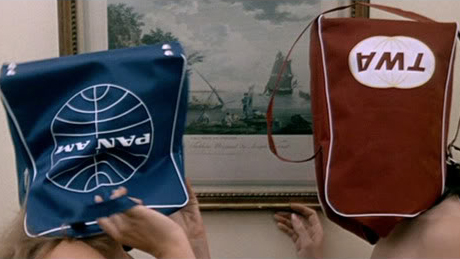
The men in the film are equally dissatisfied with their lives and careers. They immerse themselves in politics, technology, sports, and pseudo-intellectualism, or resort to paying hookers to act out sexual fetishes and fantasies (such as the American war correspondent who requires prostitutes to run around with flight bags on their heads before engaging in a threesome).
On the surface, this film seems similar to features such as Luis Buñuel’s Belle De Jour and Godard’s own Vivre Sa Vie. However, what sets 2 or 3 Things apart from those features is the extensive commentary on capitalism, consumerist culture, modern life, politics and communication.
The film features a whispered narrator (voiced by Godard), whose pointed commentary ponders the meaning of life, instead of solely advancing the story. Moreover, the characters break the fourth wall to convey highly intriguing, and often devastating, mini-monologues, where they discuss their life stories, innermost thoughts, desires, fears, interests, jobs, etc., in a brutally honest way they’re unable to communicate to the other characters. This plot device works beautifully, as it brings into focus the way our minds work in social interactions where we appear cool and detached as our thoughts are racing a mile-a-minute. It also highlights the wall we build up around ourselves in the fear of having our desires and insecurities exposed or misunderstood.
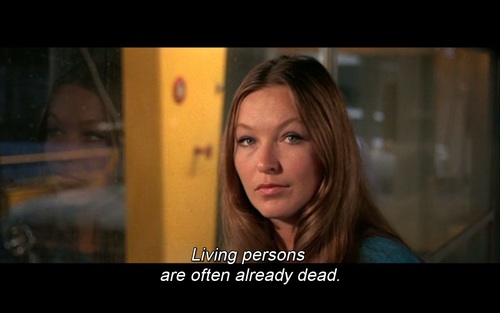

The film features is peppered with a number of quotable quotes. Critiques about the joining of political and corporate interests to reshape cities and countries are more relevant today than ever, as urban areas across the globe are being reshaped into banal, commodity-driven and culturally-devoid playgrounds, where every insecurity can be pacified, for a price. Additionally, the film’s discussion of our ability to forsake interpersonal relationships in favor of technology is even more penetrating in the digital age. One can only look at the film’s world -- as well as the present society we live in -- and wonder what’s it all for?
Arguably one of the best features in Godard’s filmography, 2 or 3 Things I Know About Her features standout performances from Marina Vlady, Joseph Gerhard and Juliet Berto.
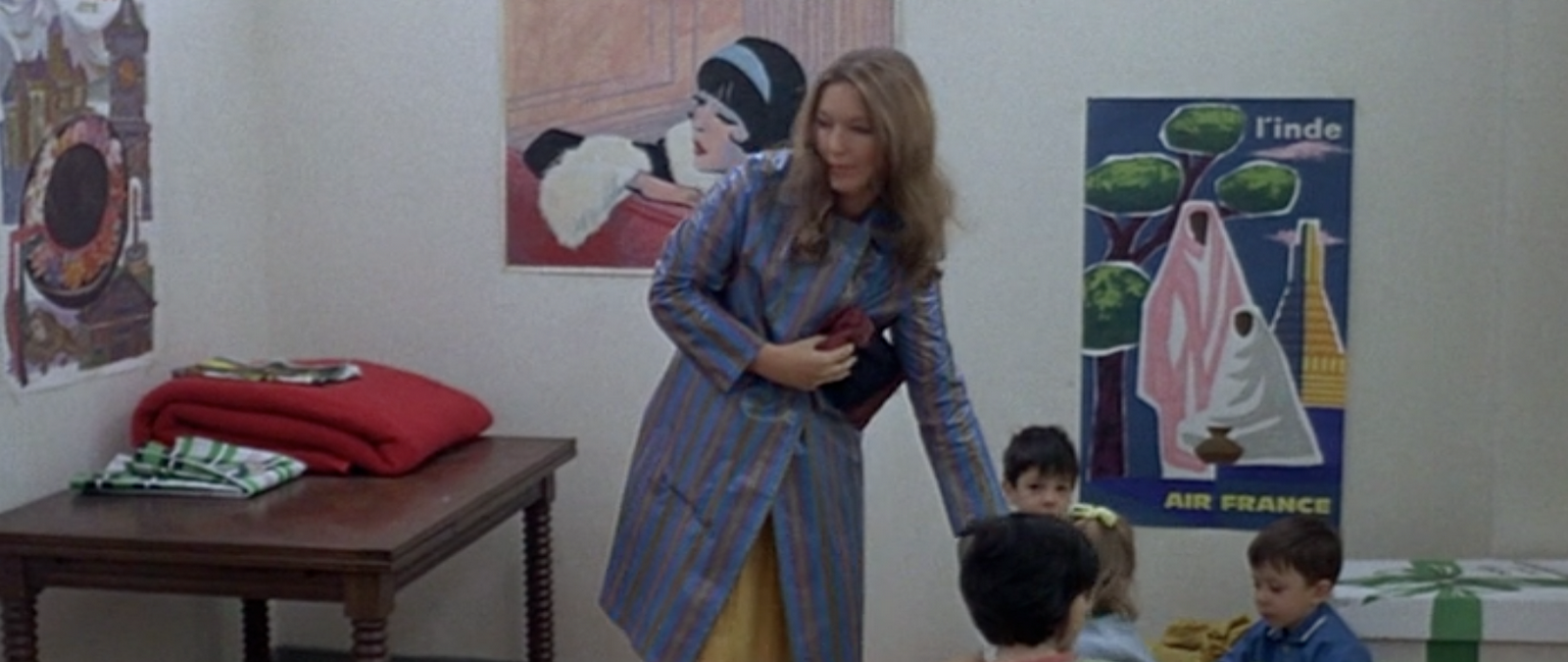
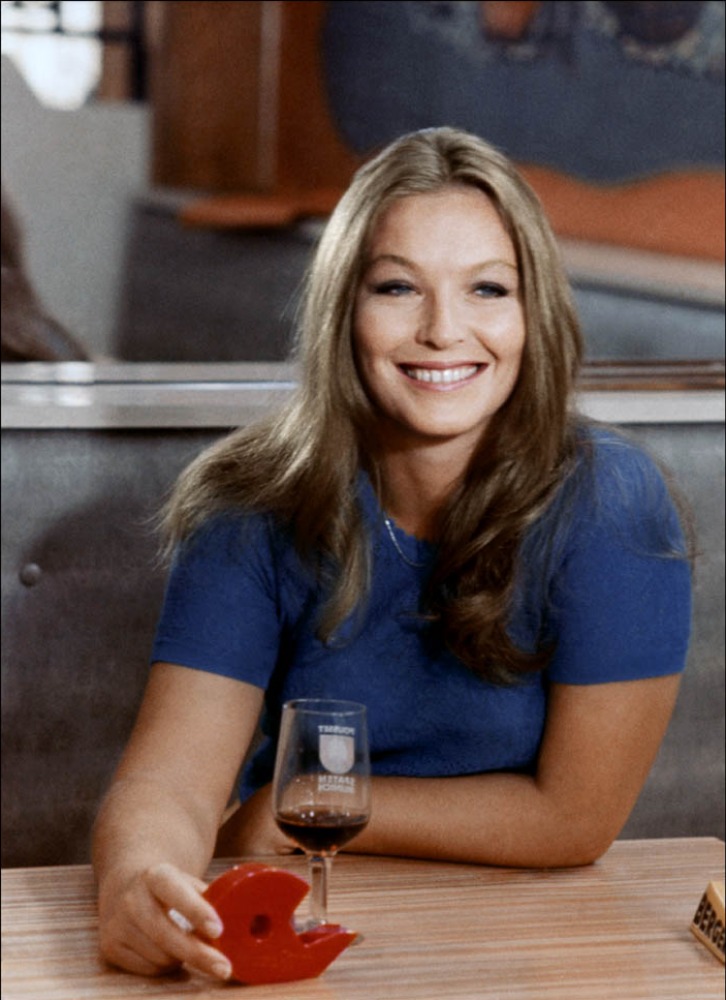
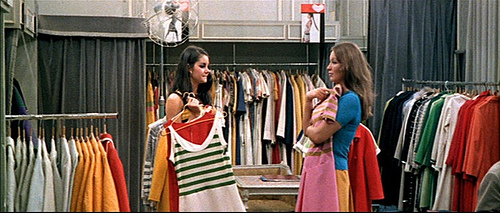
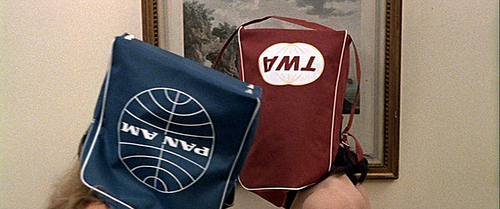
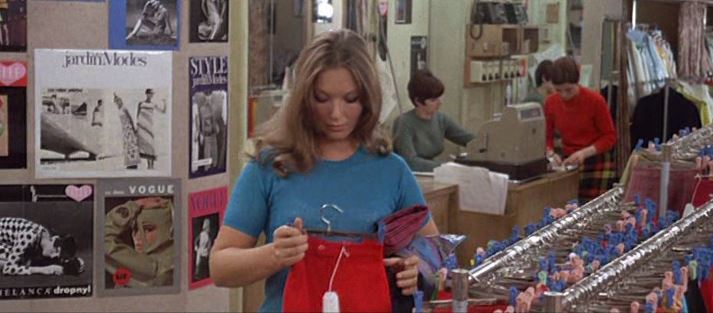
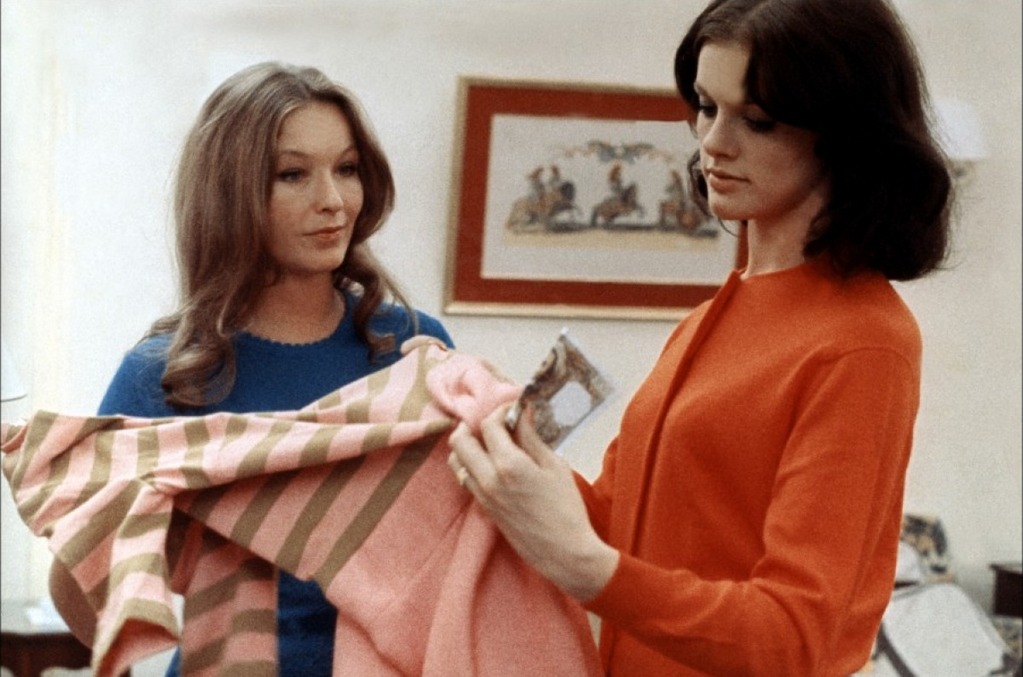
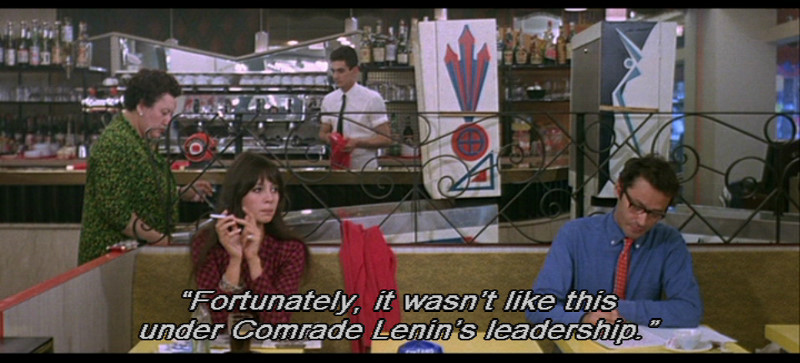
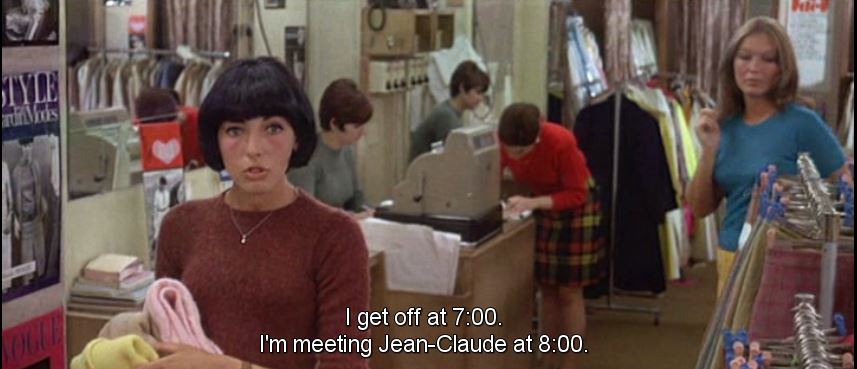
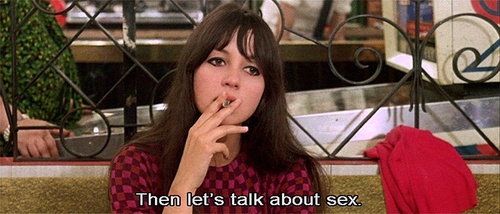
Discussing fashion in a film that brutally critiques materialism seems -- for lack of a better word -- idiotic. However, as with all Godard features, the beautiful cinematography and wardrobe styling are second to none, so the clothing must be analyzed.
The bold prints, patterns and colors featured in the film have a timelessness style that will brighten any Spring or Summer season. Pinstriped raincoats, brightly-colored pencil skirts, vintage flight bags, and gradient-tint, full-rim glasses are prominently displayed in the film, offering a myriad of inspired ways to finish off your look.
Colorful Radicals: Jean-Luc Godard's Week-End
Violent car crashes, murder plots, infidelity, fashion and radicals: Jean-Luc Godard's Week-End.
Jean Yanne and Mireille Darc
Set largely on the French countryside, Jean-Luc Godard's Week-End is an experimental and challenging work that questions the seemingly senseless nature of modern life. The film follows a philandering middle-class couple as they head to the countryside to help an ailing family member meet his impending demise. Why? They wanted to expedite the inheritance process. Their adventure turns into more than they bargained for as they encounter a series of bloody car accidents, violent revolutionaries and historical reenactments that offer meditations on class struggle. A black comedy at its core, Week-End is one of Godard's noteworthy features.
Juliet Berto as the Radical
Fashion wise, the film features an impressive array of 1960's clothing. The exquisite styling offers a wealth of ideas as the sunglasses, dresses, skirts, shoes and haircuts are timeless.
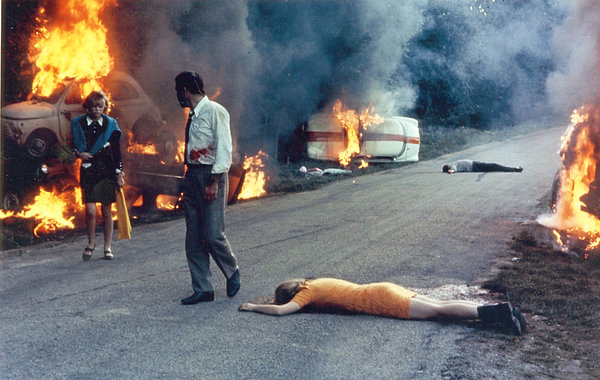
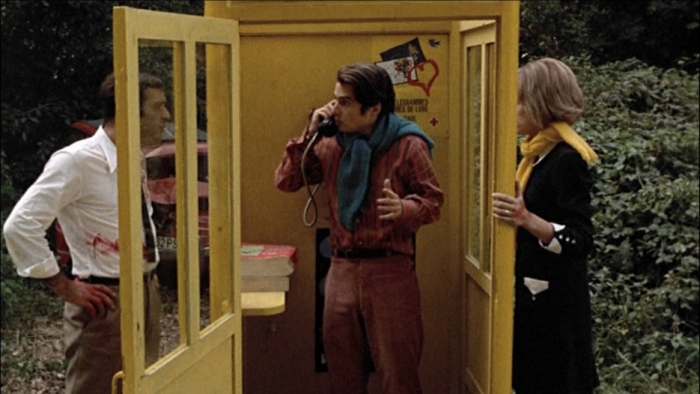
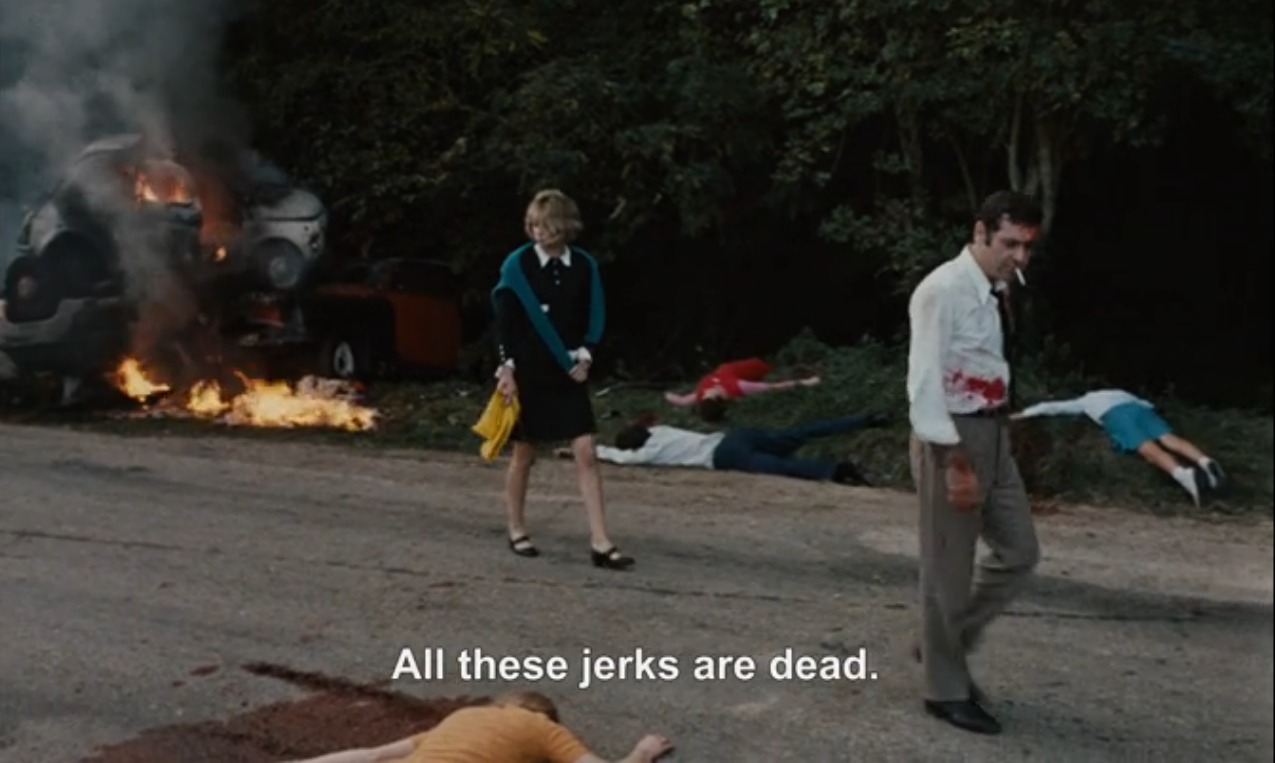

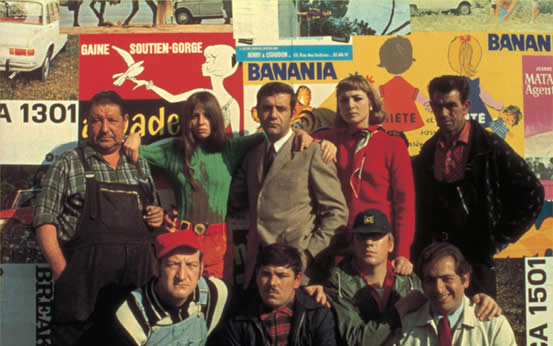
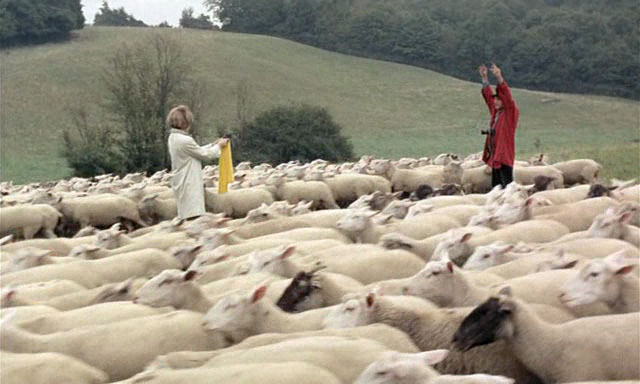
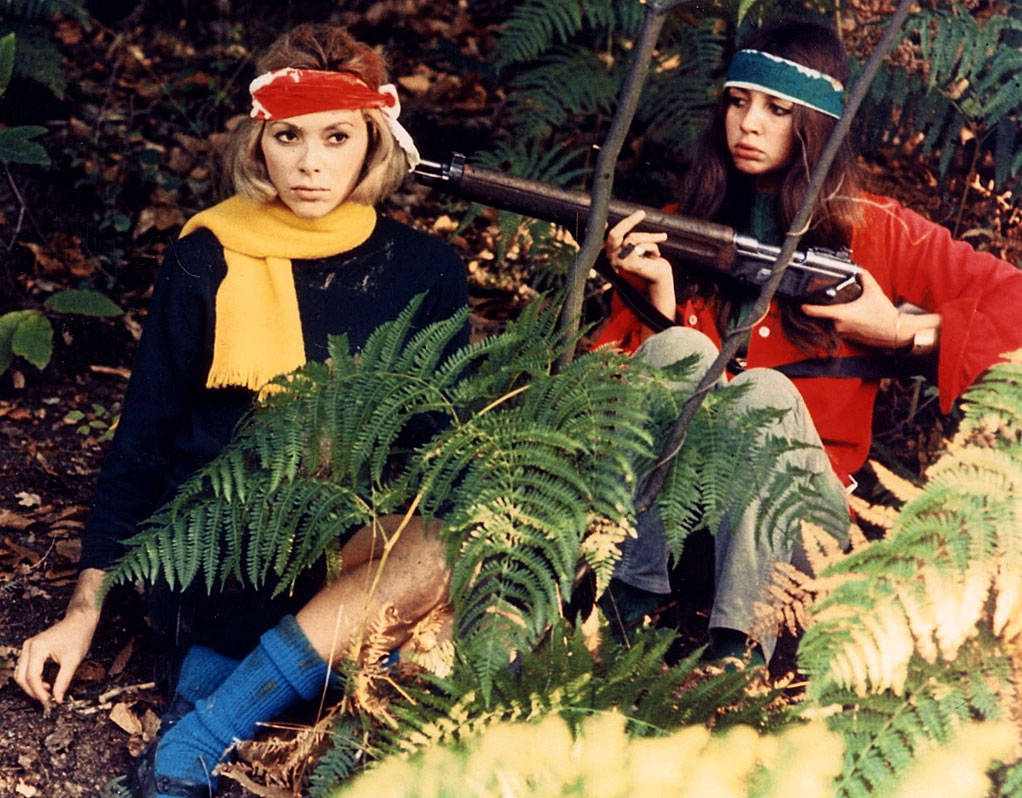
Released in 1967, Week-End stars Mireille Darc, Jean Yanne, Jean-Pierre Kalfon, Yves Afons and Juliet Berto.
Le Bonheur: Spring & Summer Style
Are monogamous relationships realistic in an increasingly self-center society? Agnes Varda questions fidelity and the idea of happiness in her fashionable and explosive 1965 film, Le Bonheur.
Agnes Varda questions fidelity and happiness in her explosive 1965 film, Le Bonheur. When a (seemingly) good-natured husband and devoted family man becomes involved in a steamy affair with a beautiful postal worker, he believes that happiness -- or bonheur -- is attainable if his two separate loves are combined into a harmonious three-way relationship. This challenging film uses a seductive mix of a picture-perfect family, cheery visuals, and beautiful Mozart soundtrack to mask an undercurrent of selfishness that forever changes the family's idyllic world through a dramatic turn of events.
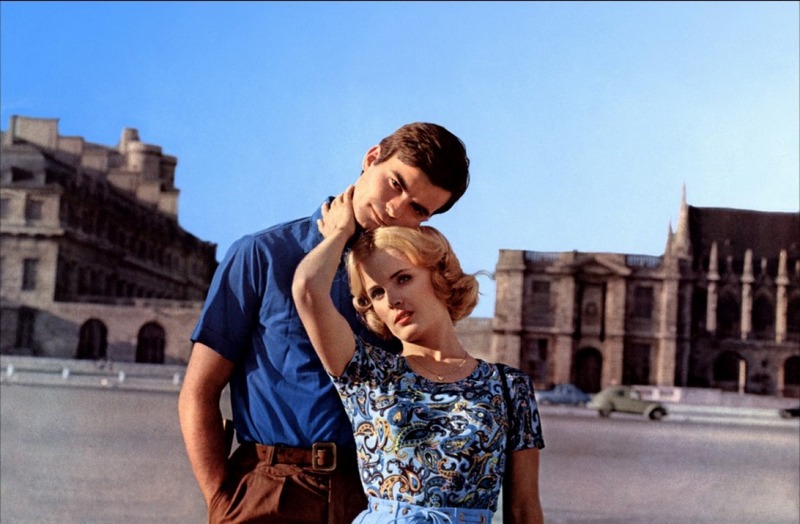
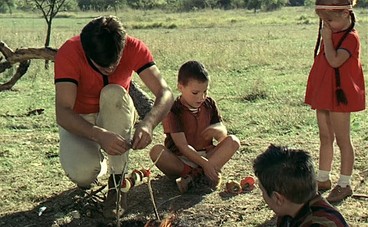
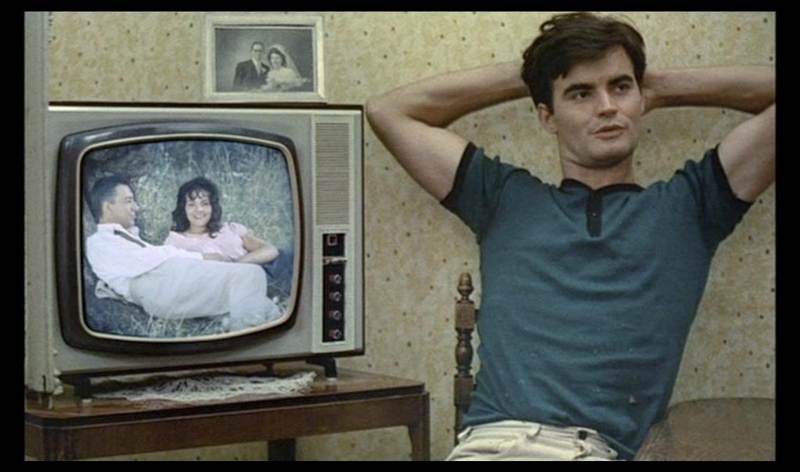
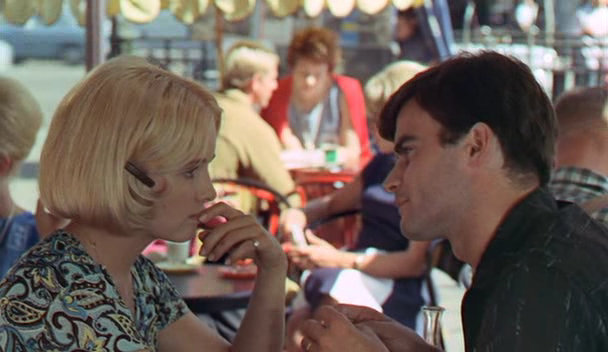
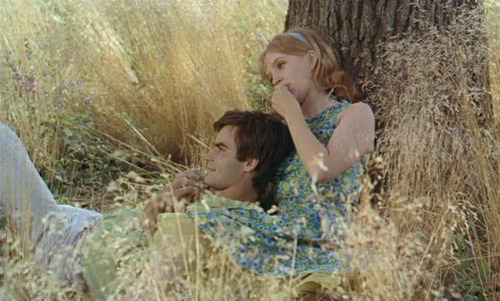
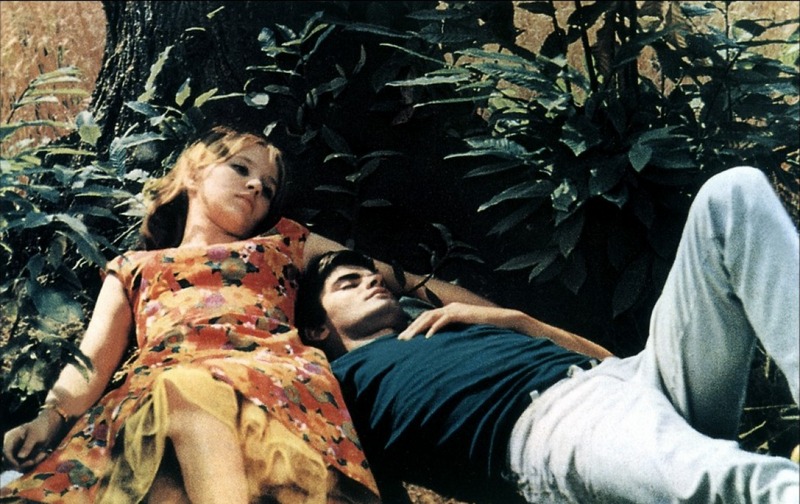
Visually, Le Bonheur is reminiscent of a present-day French Connection, Club Monaco, or J. Crew catalog. The characters are dressed in vibrant Spring and Summer attire with bold prints, patterns, and colors. The wife and mistress characters sport cropped pants, cardigans, tops with bold prints, tasteful accessories, and an array of patterned form-fitting sun dresses. The husband/adulterer wears everything from slim-fit tees and skinny jeans, to linen tops and long sleeve oxford shirts. The children are exquisitely styled as well, the daughter in beautiful dresses and the son in colorful overall shorts and tees.
Fun fact: the family shown on film is depicted by a real-life family of actors. Le Bonheur stars Jean-Claude Drout, Claire Drout, Olivier Drout, Sandrine Drout, and Marie-France Boyer.
Jean Seberg Leaves Us Breathless
What's old is new: Jean Seberg's sophisticated style in Breathless continues to influence fashion trends across the globe.
Jean Seberg gave the performance of a lifetime in Jean-Luc Godard's breakthrough film, Breathless (À bout de souffle). Seberg stars as Patricia, an American journalism student who gets mixed up with a petty thief and murderer, Michel, in 1960's Paris. Breathless blends the intrigue of film noir with the gangster genre and was a critical and commercial smash.
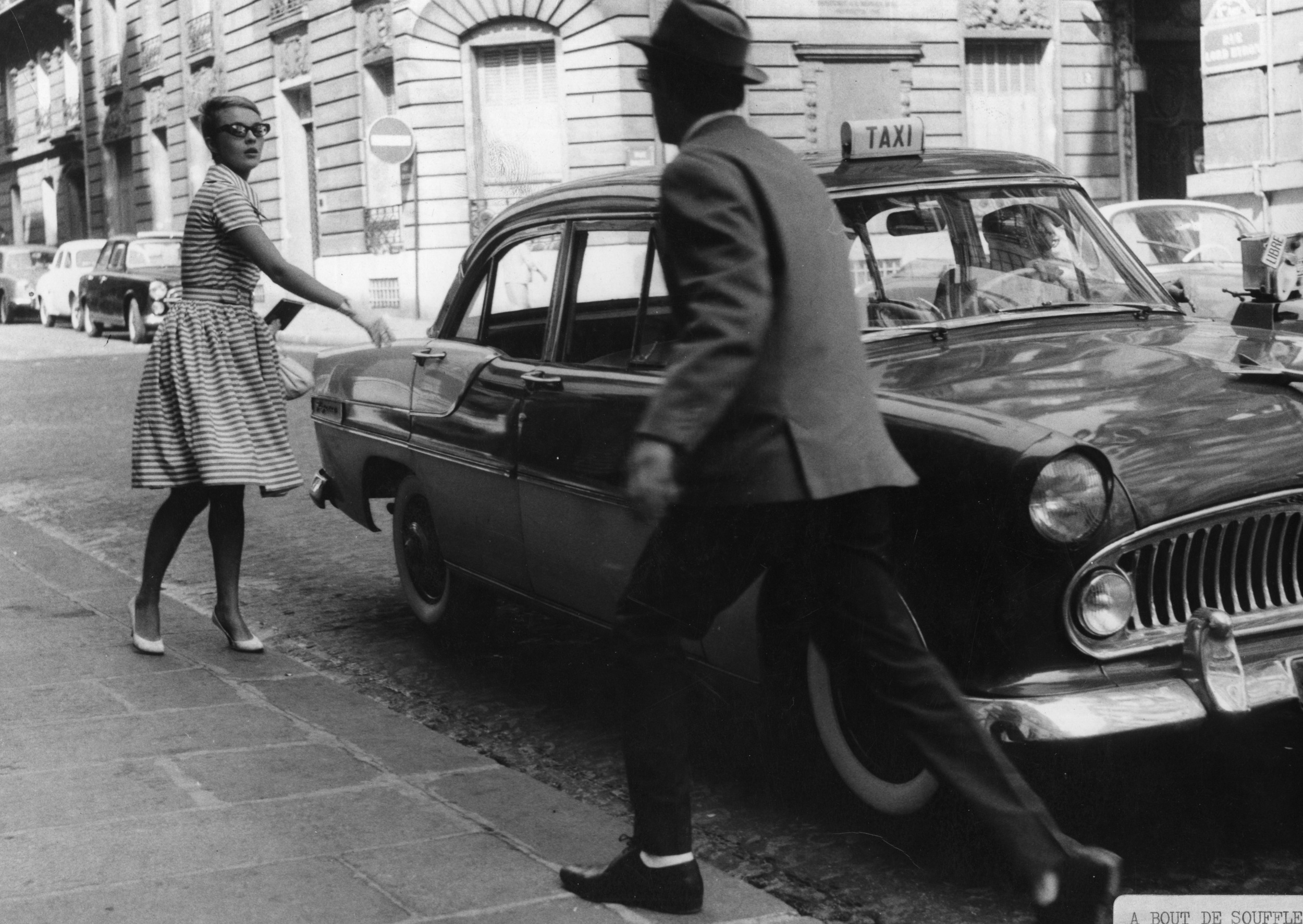
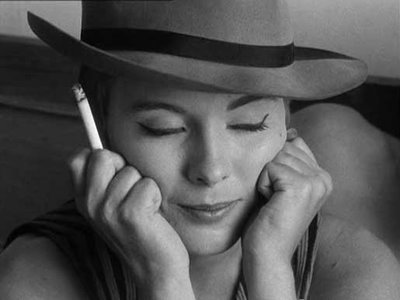
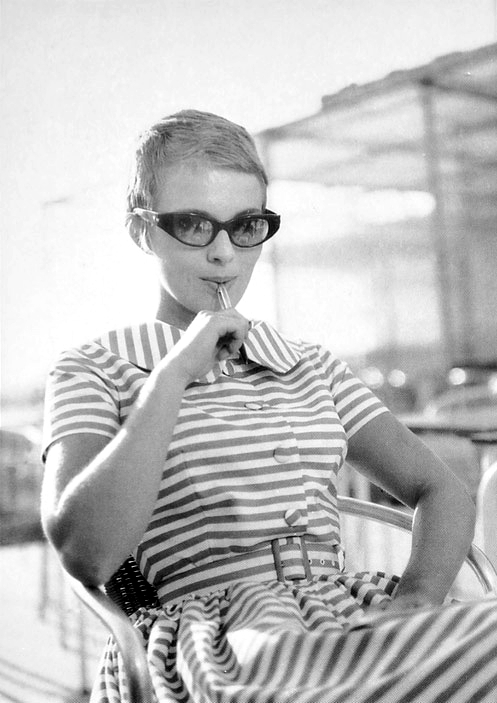
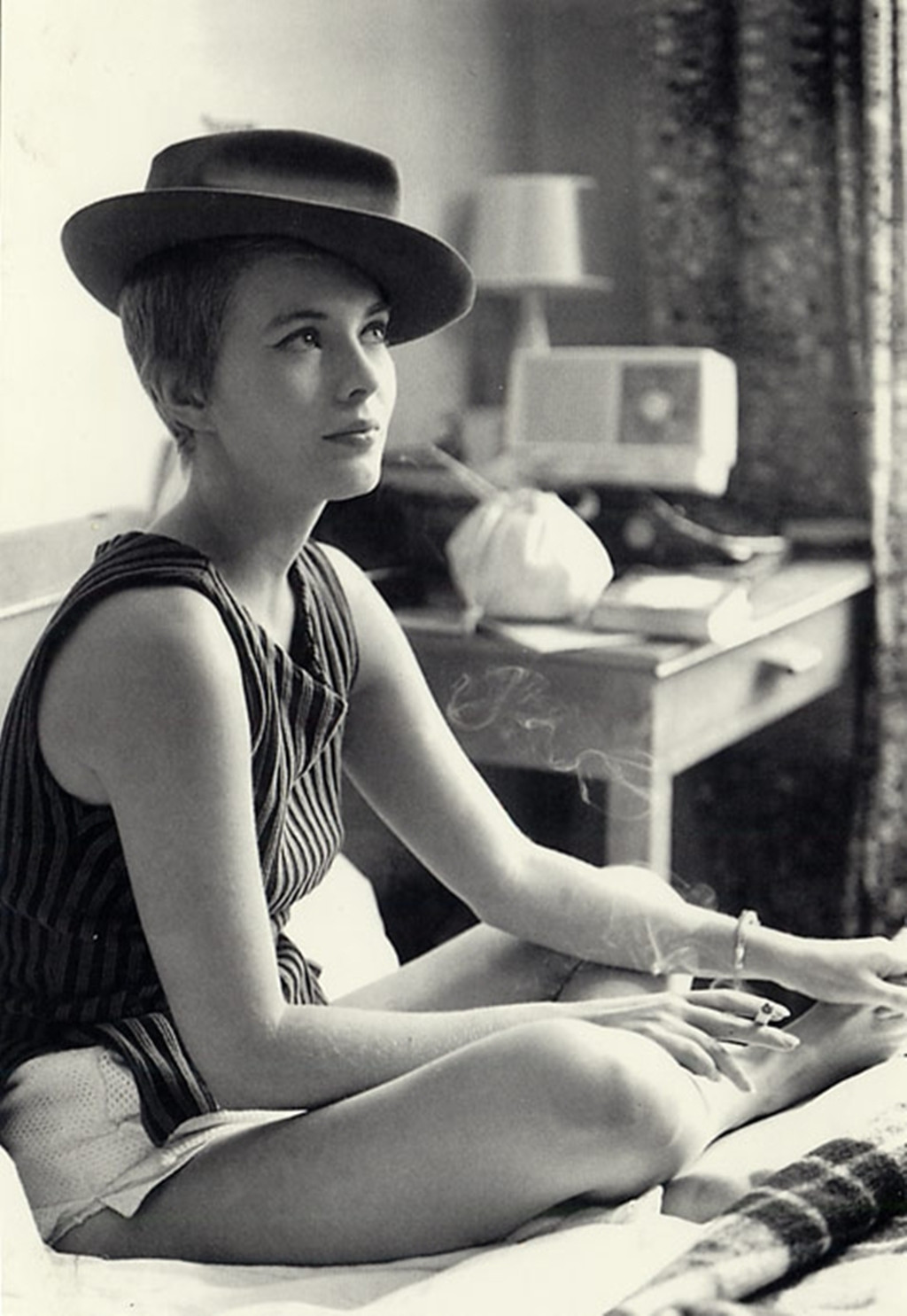
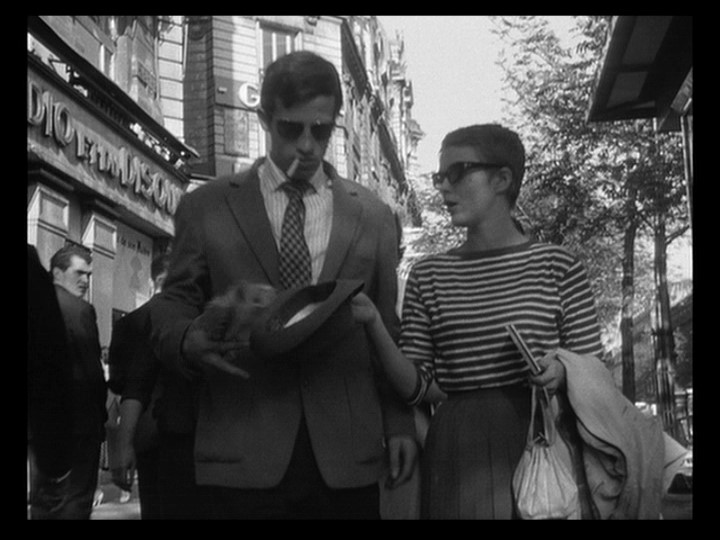
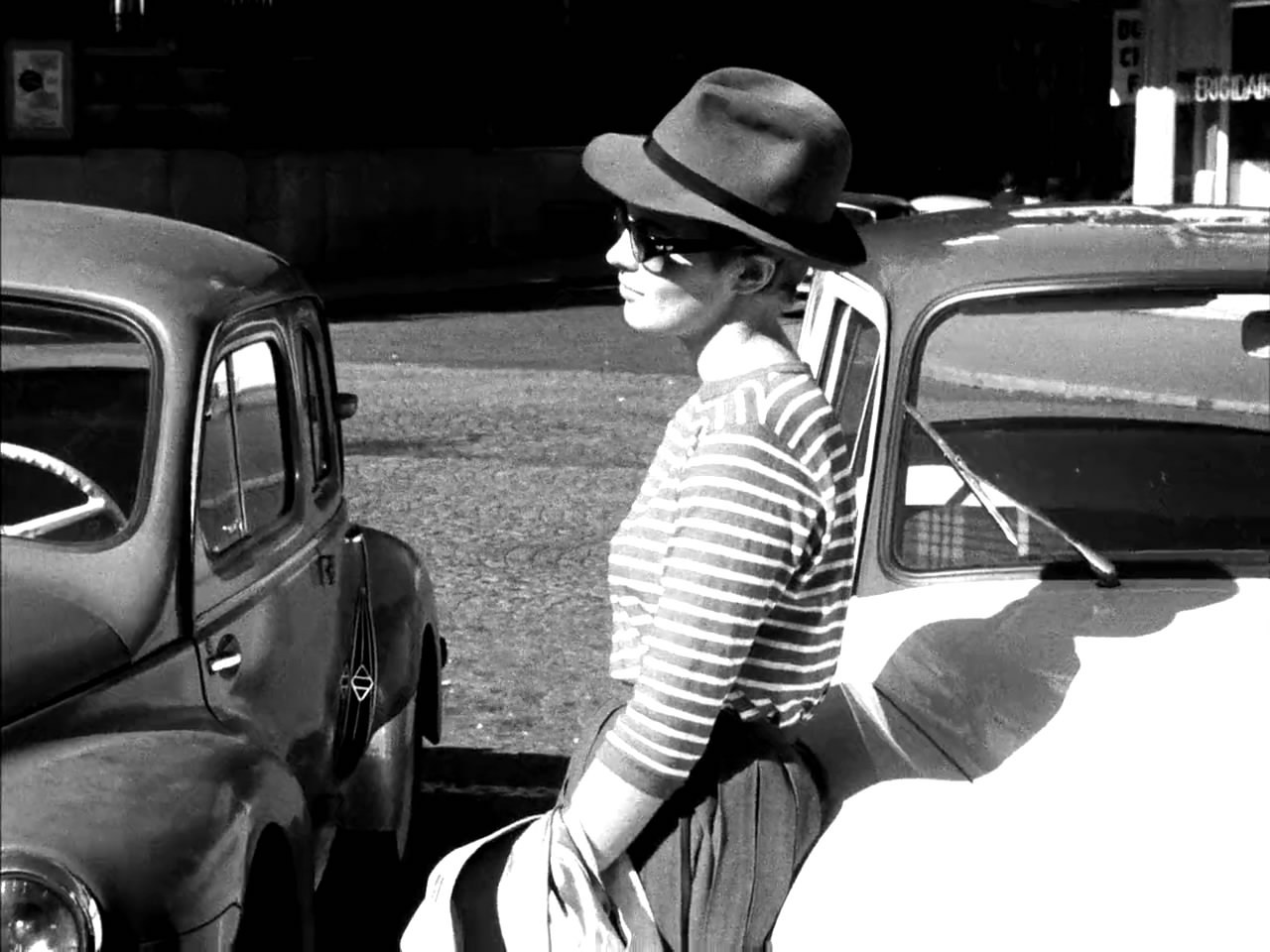
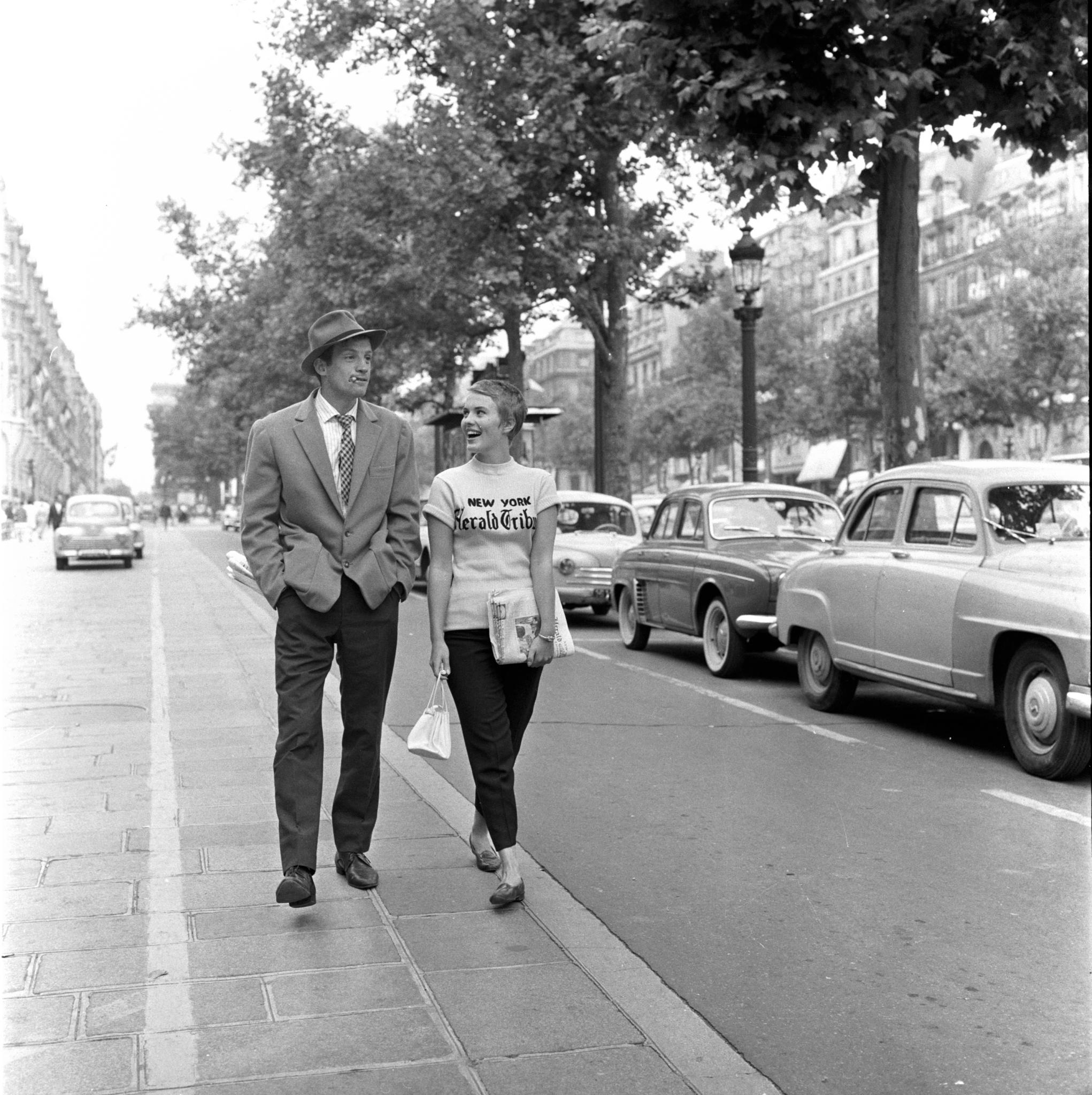
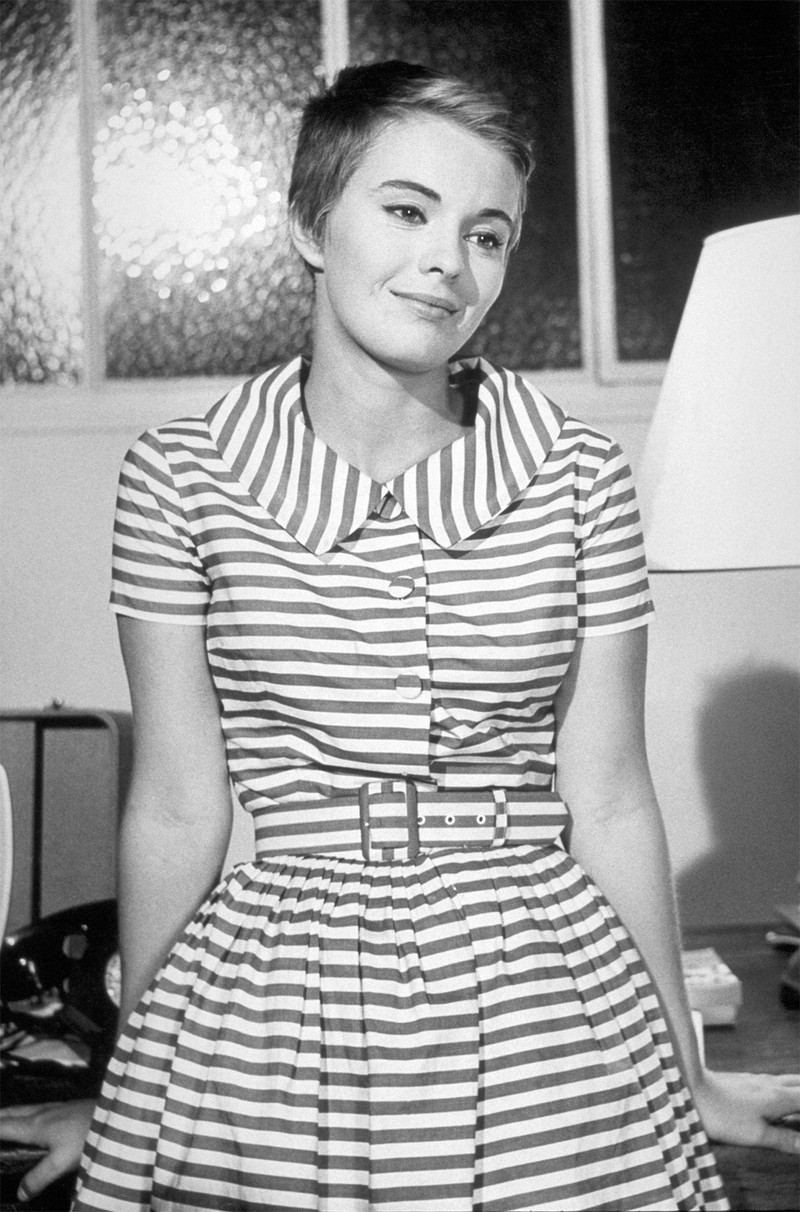
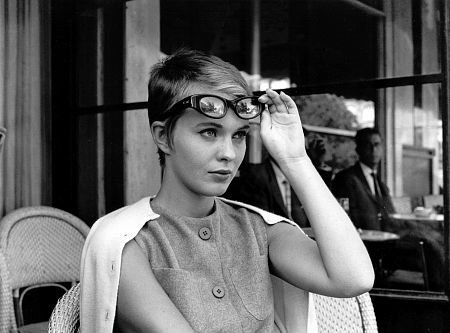
Seberg's style in Breathless continues to influence fashion trends across the globe. Her pixie cut, cat eyeliner, loafers, pleated skirt, stripped dresses and shirts, printed tee, cropped pants and shorts, fedora, and sleek shades have been fashion staples for decades. Breathless co-stars Jean-Paul Belmondo as Michel.
Cléo from 5 to 7
Paris, the polka dot dress and a cancer scare: Agnes Varda's Cléo from 5 to 7.
Agnes Varda's iconic Cléo from 5 to 7 is a daring slice of life film about a Parisian pop singer awaiting the results of a medical test. Corinne Marchand stars as the film's titular character and gives a breathtaking performance that ranges from childlike despair to self-actualization.
This thought provoking film is expertly written, directed, and acted. The streets of Paris radiate in black and white, and Cleo's effortless style and sophistication are a sight to behold. Keep your eyes peeled for cameos by legendary actress and fashion icon, Anna Karina, and world-renowned French New Wave director, Jean-Luc Godard.
The Fashionable Libertine: My Night at Maud's
The libertine, winter in Clermont-Ferrand, and late-1960's French fashion.
The third of Éric Rohmer's Six Moral Tales, My Night at Maud's (Ma nuit chez Maud) delves into the moral dilemma faced by a deeply religious Frenchman whose intellect and passions are stirred during an overnight stay with a recently divorced libertine. The film's exceptional cinematography perfectly captures the dead of winter and late-1960's French fashion. Starring Françoise Fabian as Maud and Jean-Louis Trintignant as Jean-Louis.


